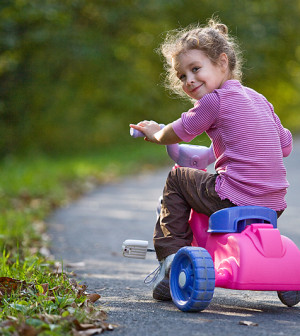- Navigating Your Midlife Crisis: Embracing New Possibilities
- City Raccoons Showing Signs of Domestication
- Mapping the Exposome: Science Broadens Focus to Environmental Disease Triggers
- One Week Less on Social Media Linked to Better Mental Health
- Your Brain Changes in Stages as You Age, Study Finds
- Some Suicide Victims Show No Typical Warning Signs, Study Finds
- ByHeart Formula Faces Lawsuits After Babies Sickened With Botulism
- Switch to Vegan Diet Could Cut Your Greenhouse Gas Emissions in Half
- Regular Bedtime Does Wonders for Blood Pressure
- Dining Alone Could Mean Worse Nutrition for Seniors
By 9 Months, Baby’s Visual Learning Kicks In: Study


By the time they’re 9 months old, babies can use pictures to learn about an object and later recognize the real thing, researchers say.
The findings from their study of 30 British babies appear in the journal Child Development.
“The study should interest any parent or caregiver who has ever read a picture book with an infant,” team leader Jeanne Shinskey, lecturer of psychology at the University of London and adjunct assistant professor of psychology at the University of South Carolina, said in a journal news release.
“For parents and educators, these findings suggest that well before their first birthdays and their first words, babies are capable of learning about the real world indirectly from picture books, at least those that have very realistic images like photographs,” Shinskey added.
The babies in the study were 8 and 9 months old and from middle-income homes. They were shown either color or black-and-white life-sized photos of a toy for about a minute. They were then placed in front of the actual toy in the photo and another toy.
When the two toys were inside clear containers, the babies were more likely to reach for the toy that wasn’t in the photo, which suggests that they recognized the toy in the picture and found it less interesting than the new toy, the researchers said.
When the two toys were inside opaque containers, the babies were more likely to reach for the toy they had seen in the photo. The researchers said that indicates that they had formed a strong mental image of that toy.
More information
The U.S. National Library of Medicine has more about infant and newborn development.
Source: HealthDay
Copyright © 2025 HealthDay. All rights reserved.










